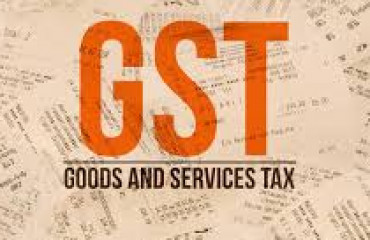
New Delhi: Central and state governments have collected about ₹1.46 trillion in Goods and Services Tax (GST) in November, as festive demand continued to support consumption of goods and services.
New Delhi: Central and state governments have collected about ₹1.46 trillion in Goods and Services Tax (GST) in November, as festive demand continued to support consumption of goods and services.
An official statement from the finance ministry said that November GST receipts show an 11% improvement over the revenue collected in the same month a year ago. Since March this year, GST receipts have remained above ₹1.4 trillion as the country gradually came out of the coronavirus pandemic.
GST revenue, however, declined sequentially from the ₹1.52 trillion collected in October. Experts pointed out that this is on account of the fact that October GST collections which represent economic activity in September had benefited from the boost in economic activity at the end of the September quarter.
Robust GST receipts is good news for policy makers banking on a consumption momentum to drive up capacity utilisation in factories and to spur private investments. Official data from the ministry of statistics and programme implementation issued on Wednesday had shown that in the September quarter, private consumption had grown 9.7% year-on-year to ₹22.29 trillion, supporting a 6.3% GDP growth in the second quarter.
Central government collected ₹59,678 crore as Central GST and states collected ₹61,189 as SGST after settlement of revenue receipts on inter-state sales. Centre also released ₹17,000 crore as GST compensation to states in November.
In November, revenue from import of goods was 20% higher and revenue from domestic transactions including import of services was 8% higher than the revenue from these sources during the same month last year, said the statement. Over ₹10,400 crore was collected by way of GST compensation cess.
Experts said the 11% revenue growth in November was expected. "The sequential dip in collections in November 2022 relative to October 2022, reflects the boost from quarter end payments in the latter month, as the inflows in each month pertain to the activity in the previous month. Moreover, while festive spending is assessed to have been high in October 2022, the generation of GST e-way bills had moderated sequentially given a higher number of holidays in that month," said Aditi Nayar, chief economist at rating agency Icra Ltd.
Data from GSTN, the agency that processes GST returns, showed that e-way bill generation declined in October to 7.68 crore from 8.4 crore seen in September. E-way bills is taken as a high frequency indicator as it shows movement of goods within and across the country.
"Healthy, regular and robust GST collections are a mirror to the economy's performance. So far, India's story seems protected from the global economic trends and shows that the domestic demand continues on a positive trajectory," said Saloni Roy, Partner at Deloitte India.
